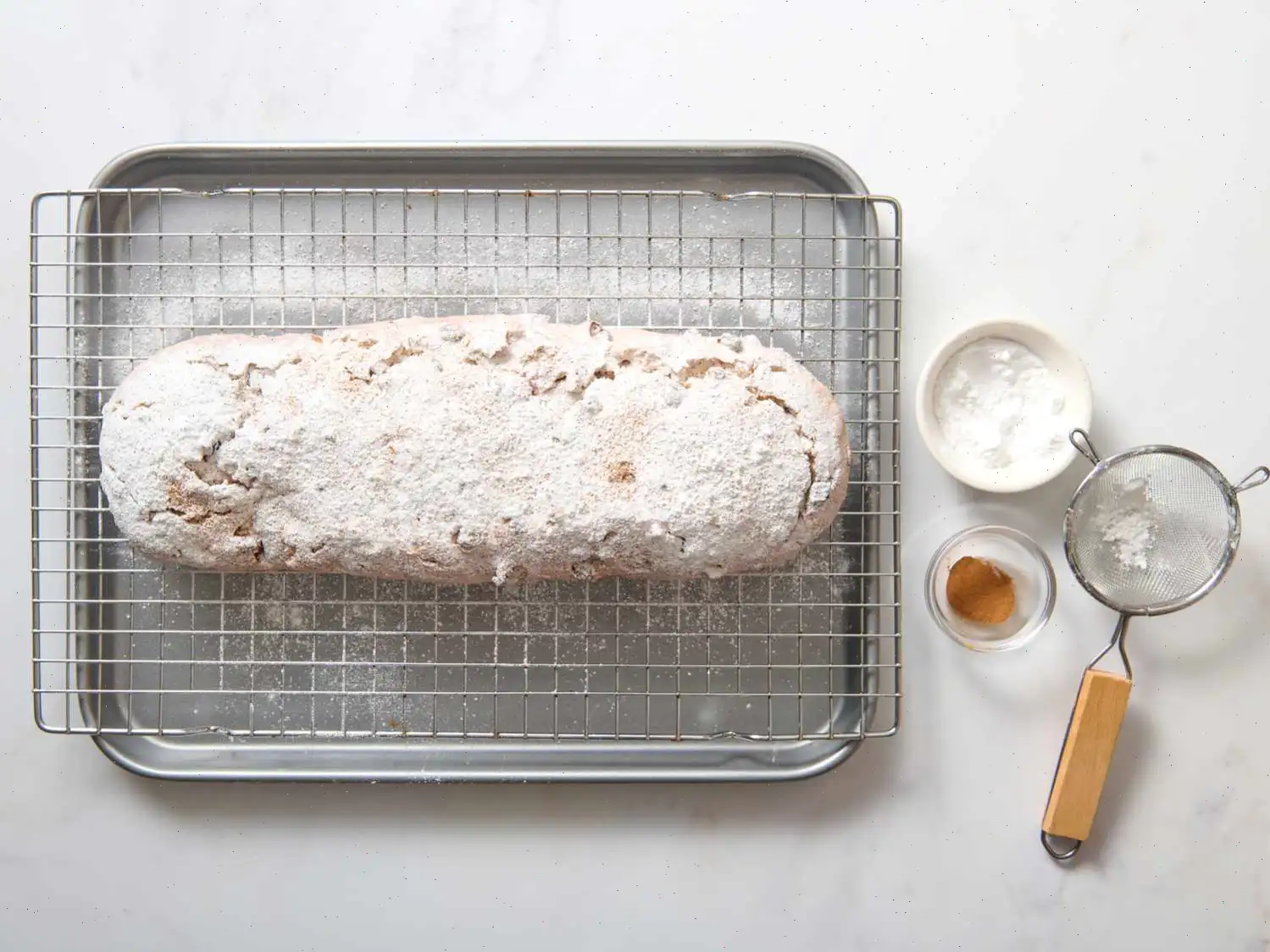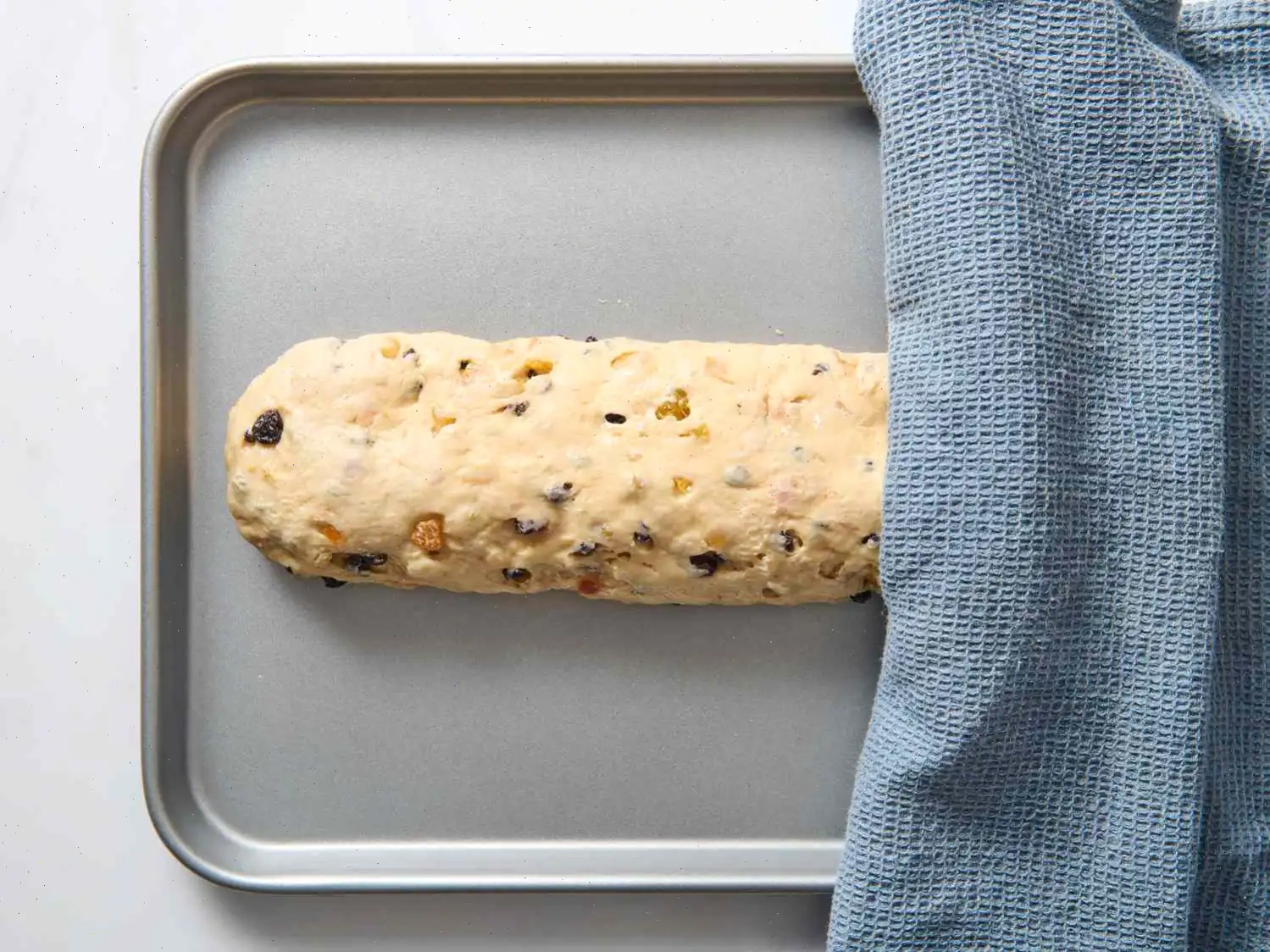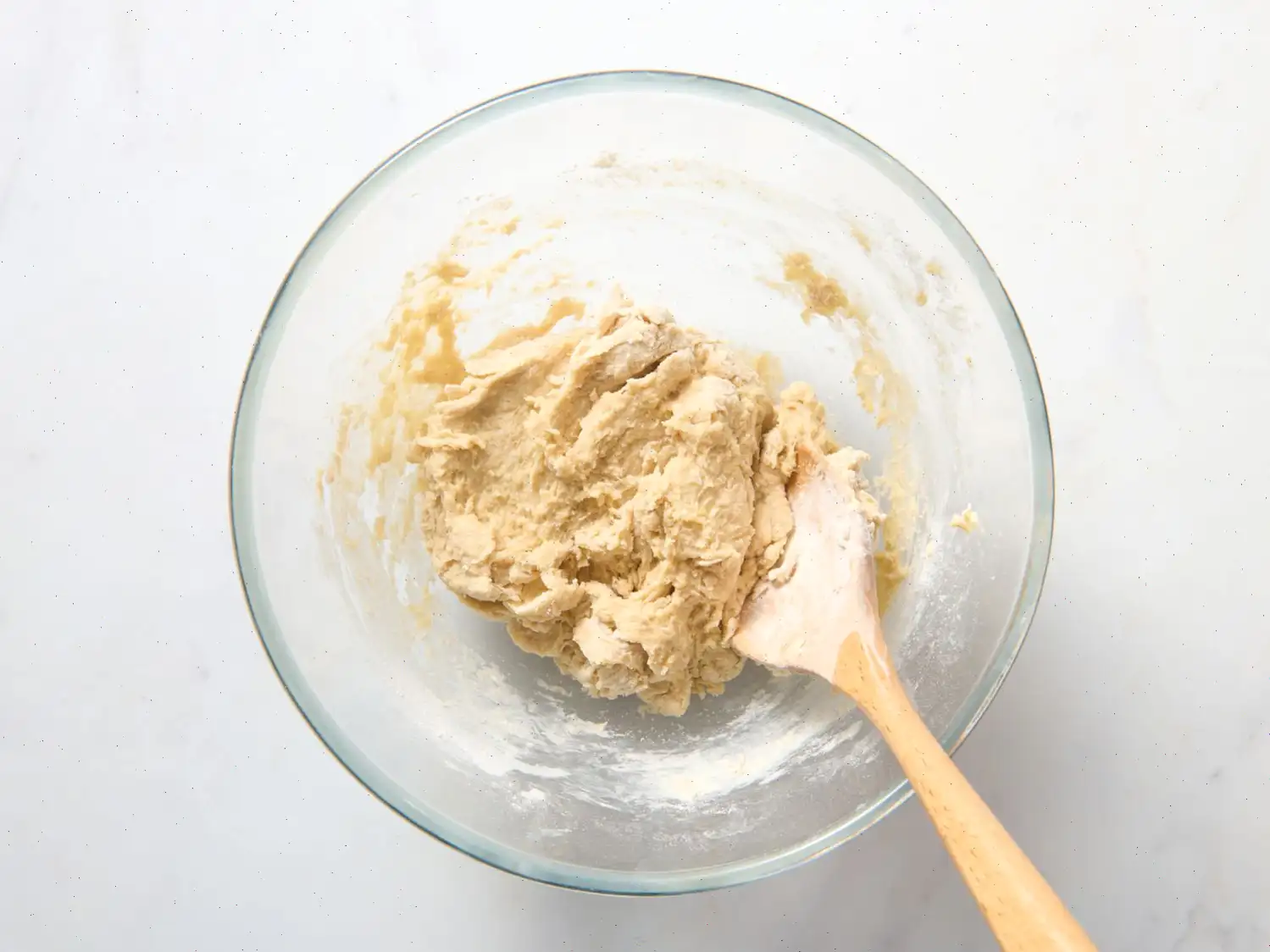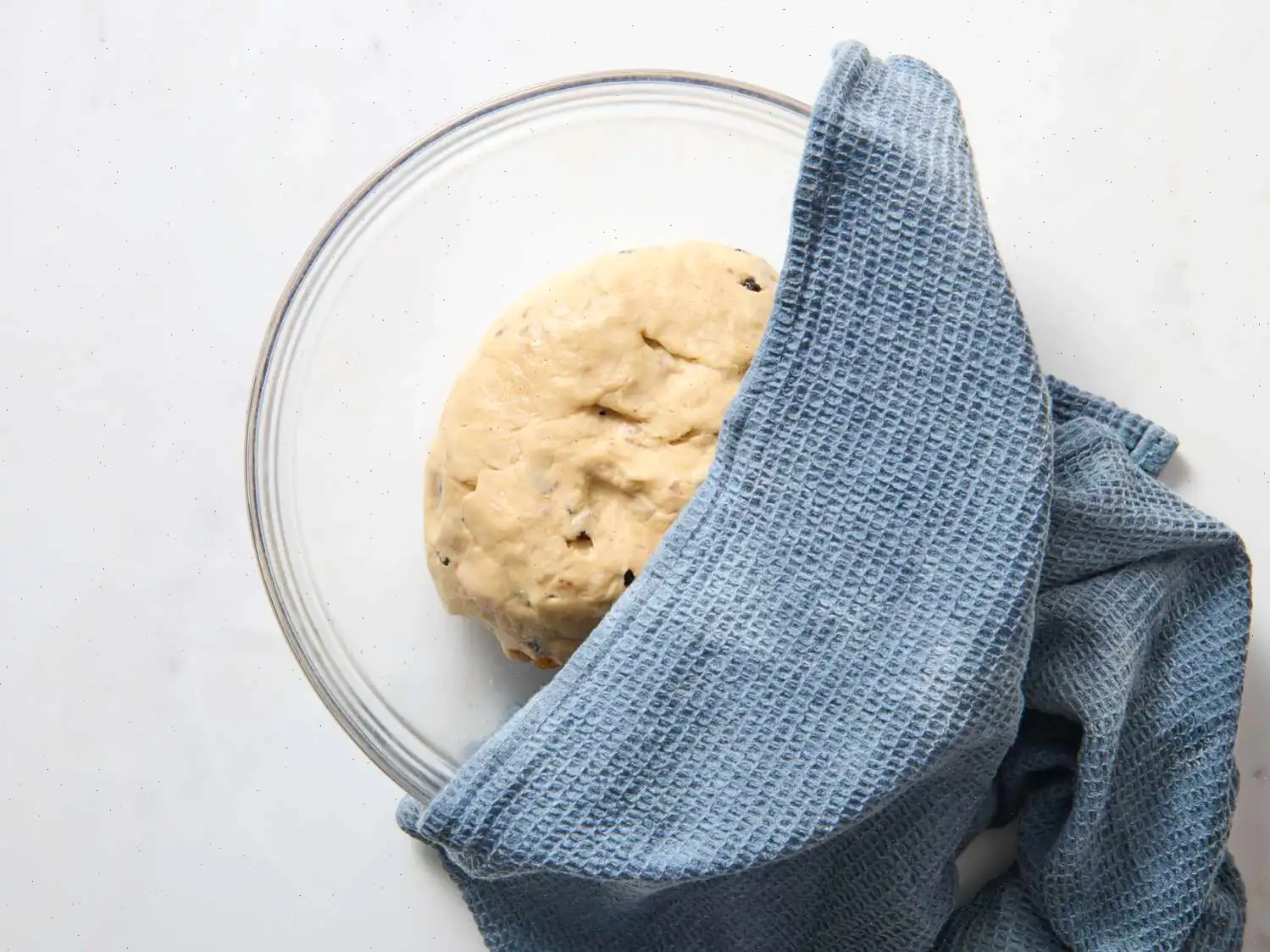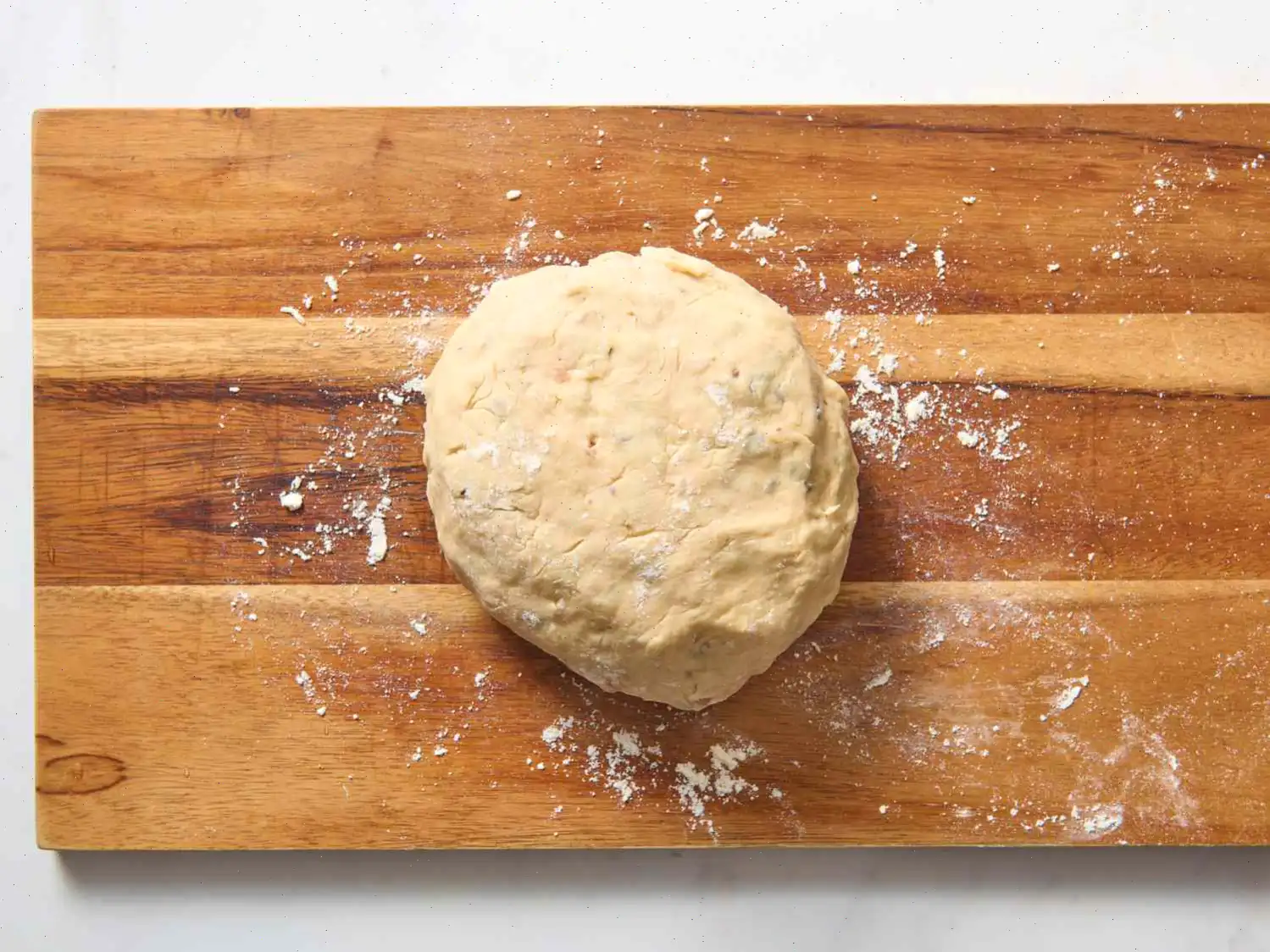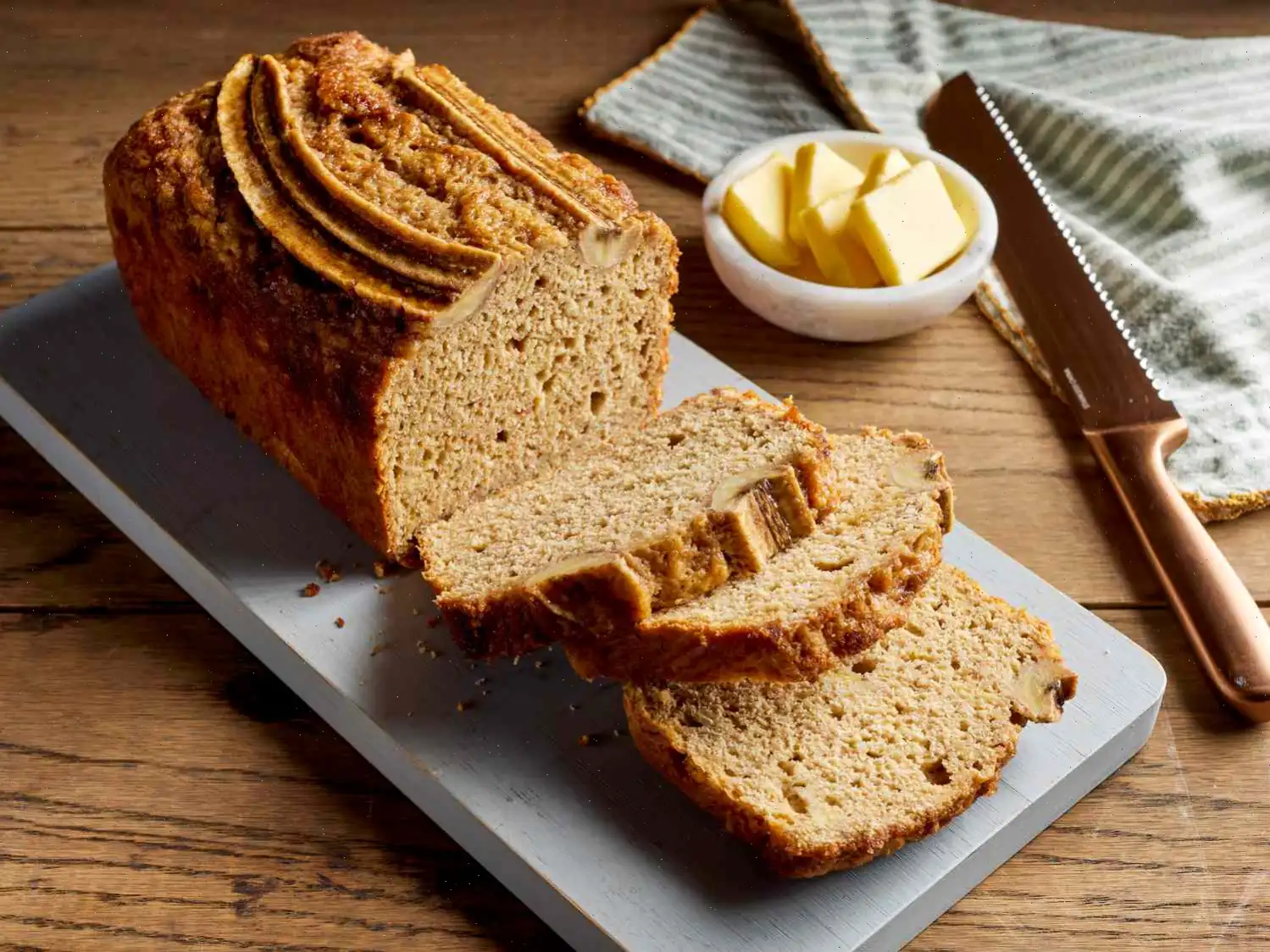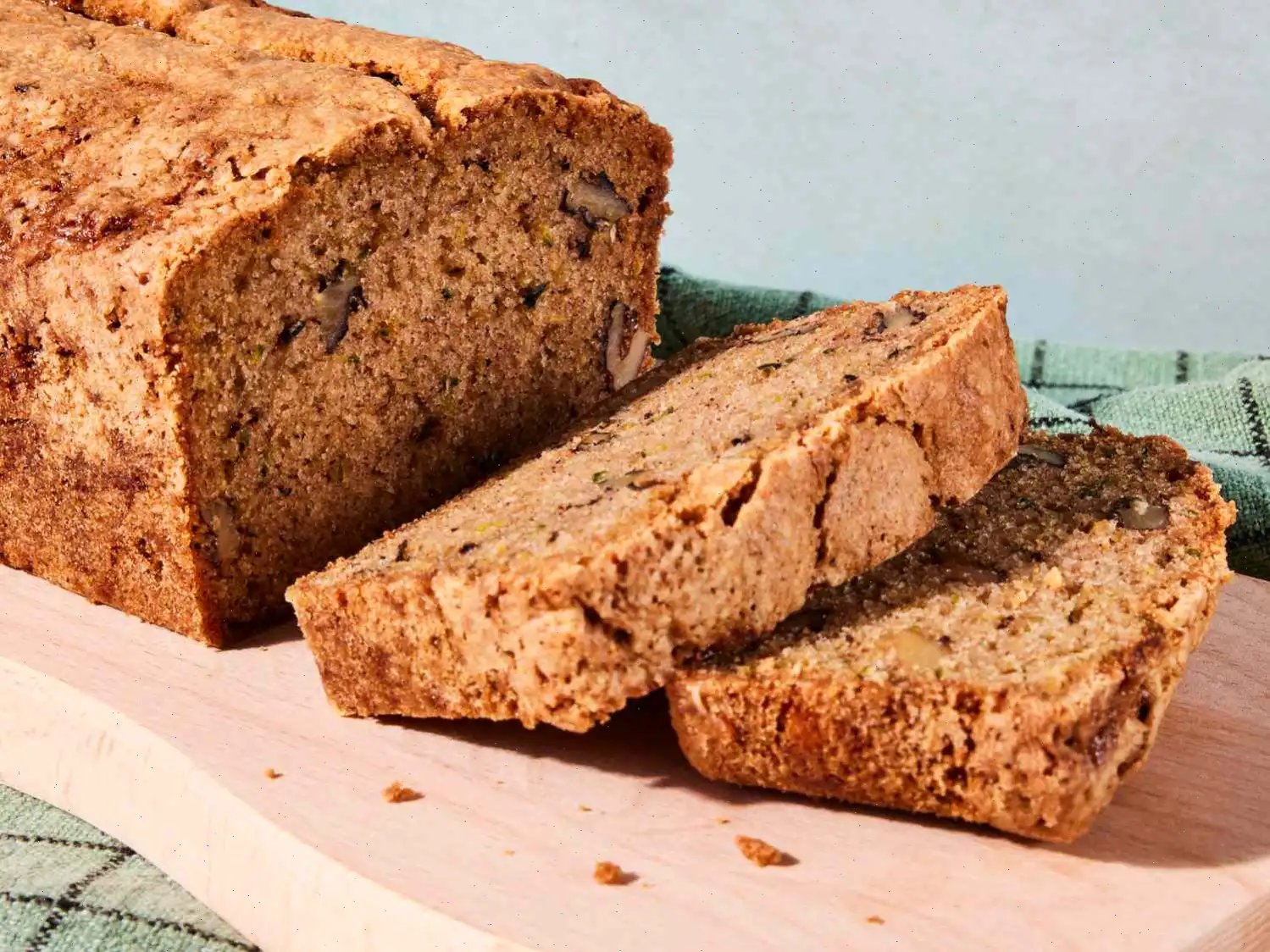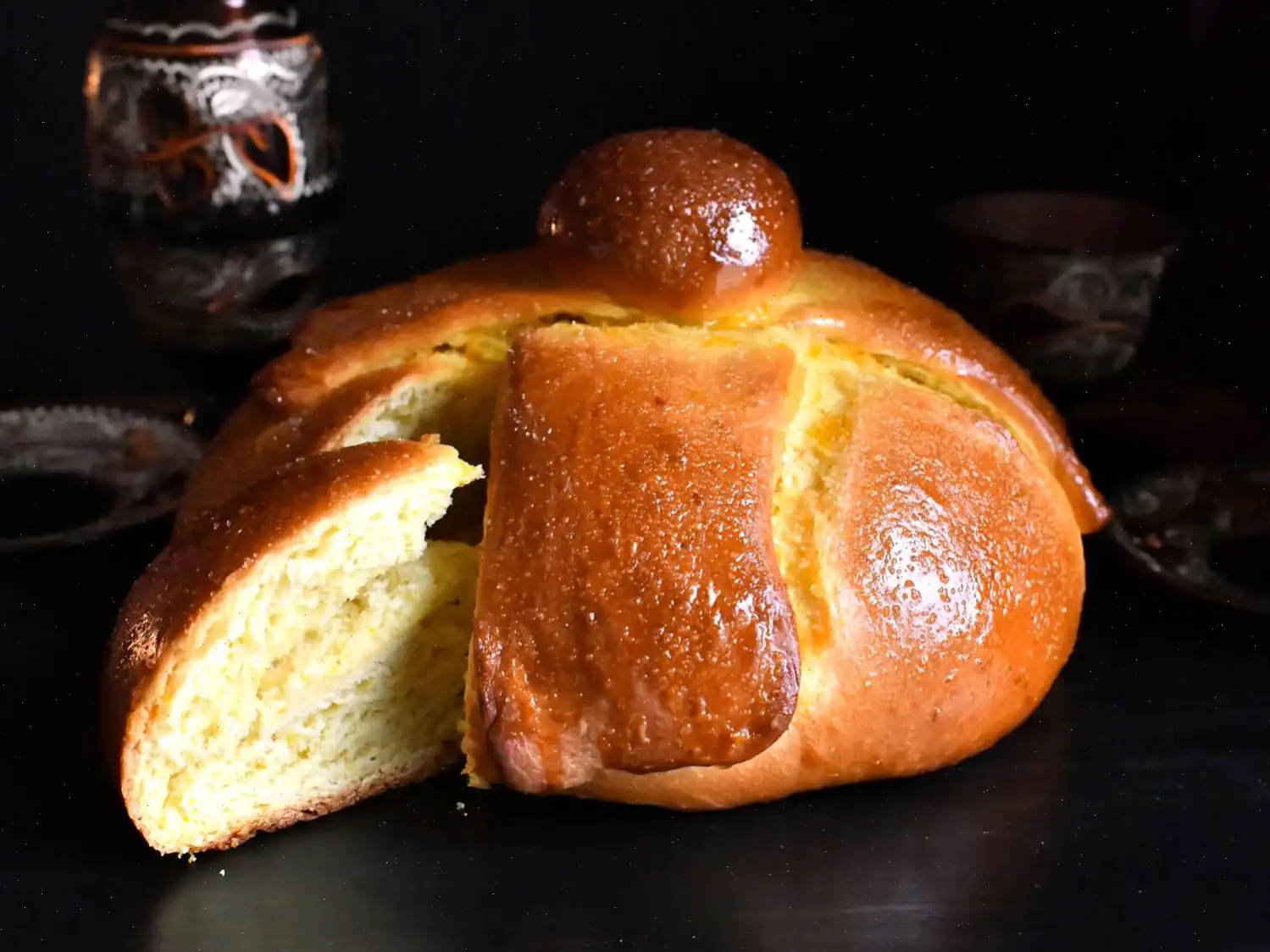
Christmas Stollen Recipe
Stollen is a delicious way to celebrate Christmas and the holiday season. This German bread is as festive as it is fruity! This Christmas stollen recipe will quickly become a holiday tradition in your family.
Stollen (also known as Weihnachtsstollen or Christstollen) is a cake-like yeast bread filled with dried fruits and, often, a marzipan filling. It is traditionally dusted with powdered sugar and cinnamon. Dating back to the 1500s, the bread was first served at the Council of Trent. Today, it is most closely associated with Christmas festivities.
Ingredients
- cup warm milk (110F / 45C)
- 1 tablespoon active dry yeast
- 2 cups bread flour
- cup white sugar
- cup softened butter
- 1 large egg
- tablespoon salt
- cup diced candied citron
- cup currants
- cup golden raisins
- cup red candied cherries, quartered
- 6 ounces marzipan
- 1 tablespoon confectioners' sugar
- teaspoon ground cinnamon
Directions
- Activate the yeast: In a small bowl, combine warm milk and yeast. Let it sit for about 10 minutes, or until the mixture becomes creamy.
- Make the dough: In a large mixing bowl, combine the yeast mixture, 2 cups of bread flour, sugar, butter, egg, and salt. Stir well to combine.
- Incorporate remaining flour: Gradually add the remaining flour, cup at a time, stirring after each addition. Continue until the dough starts to come together.
- Knead the dough: Turn the dough out onto a lightly floured surface. Knead in the candied citron, currants, golden raisins, and cherries. Continue kneading until smooth, about 8 minutes.
- Let the dough rise: Lightly oil a large bowl and place the dough in it, turning to coat with oil. Cover with a damp cloth and let the dough rise in a warm place for about 1 hour, or until doubled in size.
- Prepare the marzipan: Lightly grease a baking sheet. Deflate the dough and turn it out onto a lightly floured surface. Roll the marzipan into a rope and place it in the center of the dough. Fold the dough over to cover it, then pinch the seams together to seal.
- Let the dough rise again: Place the dough seam-side down on the prepared baking sheet. Cover with a damp cloth and let rise for another 40 minutes, until doubled in size.
- Bake the stollen: Preheat the oven to 350F (175C). Bake the stollen for 10 minutes, then reduce the temperature to 300F (150C). Continue baking for an additional 30 to 40 minutes, or until golden brown and the bottom of the loaf sounds hollow when tapped.
- Cool and dust: Remove from the oven and let the stollen cool on a wire rack. Once cooled, dust with powdered sugar and sprinkle with cinnamon.
How to Store Stollen
Homemade stollen can last up to two months when stored in a cool, dark place in an airtight .
Can You Freeze Stollen?
Yes, you can freeze stollen! Slice it into portions and wrap each slice in storage wrap, then in a layer of aluminum foil. You can freeze it for up to six months. To thaw, simply place in the refrigerator overnight.
Nutrition Facts (per serving)
- Calories: 178
- Total Fat: 7g (9% Daily Value)
- Saturated Fat: 3g (14% Daily Value)
- Cholesterol: 24mg (8% Daily Value)
- Sodium: 307mg (13% Daily Value)
- Total Carbohydrate: 29g (10% Daily Value)
- Dietary Fiber: 1g (5% Daily Value)
- Total Sugars: 18g
- Protein: 2g (4% Daily Value)
- Calcium: 43mg (3% Daily Value)
- Iron: 1mg (4% Daily Value)
- Potassium: 122mg (3% Daily Value)
Note: Nutritional values are based on a 2,000 calorie diet. Your daily values may vary depending on your individual needs.

Christmas Stollen, also known as Weihnachtsstollen or Christstollen, is a beloved German holiday bread that has delighted families for centuries. This rich, yeasted bread is typically filled with dried fruits, nuts, and marzipan, then dusted with powdered sugar. Its festive appearance and delicious flavor have made it a staple at Christmas time, especially in Germany, where it has deep historical and cultural roots.
Origin and History
The origins of Stollen can be traced back to the late 15th century in Germany. The first documented recipe appeared around 1400, but it was the Council of Trent in 1560 that played a significant role in popularizing this Christmas treat. Initially, Stollen was made with simple ingredients such as flour, yeast, and water, as butter and milk were banned by the Church during Advent and Lent. However, after the ban was lifted, butter was added, making the bread richer and more flavorful.
Regional Variations
Although Stollen is traditionally German, it is enjoyed in many regions across Europe, each with its own variations. In Dresden, Stollen is particularly famous, and the city even holds an annual Stollen Festival to celebrate this delicious bread. The bread's shape is symbolic, representing the Christchild wrapped in swaddling clothes, which is why Stollen is often made in an elongated shape resembling a baby swaddled in cloth.
Distinguishing Features from Similar Dishes
At first glance, Stollen may seem similar to fruitcakes or other yeasted breads. However, its distinctive features set it apart. The key difference lies in its rich, buttery dough, which is often filled with marzipan, giving it a unique texture and flavor. Additionally, the candied fruits and raisins provide a festive sweetness that makes it more like a dessert than a typical bread. Unlike fruitcakes, which can be dense and heavy, Stollen has a lighter, airier texture that makes it easier to enjoy in larger portions during holiday gatherings.
Where to Serve Stollen
Stollen is traditionally served during Christmas celebrations, especially in Germany, Austria, and Switzerland. It is often shared as a festive treat after a holiday meal, alongside a warm cup of coffee or tea. In some German regions, families enjoy their Stollen on Christmas Eve, cutting it into slices and savoring it over several days. The bread's long shelf life makes it an ideal gift during the holiday season, and it is often presented as a thoughtful offering during Christmas visits.
Interesting Facts
1. Stollen is said to have a long shelf life, often improving in flavor over time. Some German families even save their Stollen to enjoy on Easter, a tradition that dates back to the days before refrigeration!
2. The powdered sugar coating on Stollen is more than just decorative. It serves to preserve the bread, keeping it moist and fresh for longer periods, making it ideal for storing or gifting.
3. The dough of Stollen is usually kneaded by hand, giving it a wonderful texture. However, modern variations often use a stand mixer or bread machine to ease the process.
4. While marzipan is a common filling, some variations use other ingredients such as almond paste or even chocolate, adding a twist to the traditional recipe.
Conclusion
Stollen is more than just a Christmas bread; it is a holiday tradition steeped in history and culture. Whether you enjoy it for its sweet, fruity flavor or its symbolic shape, Stollen brings a touch of festive joy to any Christmas celebration. So, gather your ingredients and make your own Stollen this holiday season, and share a piece of this delicious tradition with your loved ones!
You can listen to this recipe in AI audio format. Simply click the play button below to listen to the content in a format that suits you best. It’s a great way to absorb information on the go!
FAQ about Christmas Stollen Recipe
Comments
Thomas Flores
01/05/2025 03:56:34 PM
This stollen recipe is outstanding, even better than the traditional German stollen according to my German friend. I trust her judgement, and for good reason - this bread is incredibly delicious. The method is quite similar to other yeast bread recipes, so don't let other reviews intimidate you. I opted for hand-kneading instead of using a stand mixer to ensure the dough's consistency was just right. The end result was a large loaf, perfect for a party. Following the advice from the "corinaesq" review, I folded the dough and generously brushed it with melted butter once out of the oven, then dusted it with layers of powdered sugar. This created a moist, slightly crisp, and sweet crust. I'm even sharing this recipe with my friend who's heading back to Germany so she can enjoy a proper Stollen next Christmas!
Victoria Gonzalez
09/15/2023 10:48:40 PM
Absolutely delicious! I had to adjust the amount of flour, but it turned out amazing! I couldn't find citron, so I decided to make it from scratch. I boiled the orange peels for ten minutes and discarded the water, then repeated the process twice more. The third time, I added an equal amount of sugar and water to the peels and boiled it to create sweet, not bitter citron. It really elevated the dish and made it the best it could be!
Pamela Johnson
01/11/2025 03:52:41 PM
I made this recipe once and ended up making it a total of five times because my family couldn't get enough of it. I really enjoyed the recipe. I soaked the fruit in rum before adding it and also added a couple of extra tablespoons of flour (I often find this necessary in Canada, where our flour is a bit different). The dough is much moister compared to bread or even brioche, but after letting it rest for an hour, it was easy to work with and the end result was delicious. Interestingly, the dough didn't rise for me as much as bread typically does, but it did expand while baking. I will definitely make this again next Christmas, or even sooner if my family has their say.
Jessica Johnson
09/06/2024 03:15:07 PM
First time attempting to make stollen, and I was pleasantly surprised. I always thought it would be challenging and time-consuming, but it was actually quite manageable and comparable in time to baking bread from scratch. The final touch of cinnamon on top, along with the dusting of sugar, added a nice extra flavor. The marzipan truly elevated the dish, so make sure not to omit it!
Jeffrey Parker
03/24/2025 12:30:46 PM
I followed Jessica's suggestion and used the bread machine this time. The result was way better than my previous attempts at making it manually. The loaf turned out bigger and fluffier, without being too dense. It's a fantastic recipe that I absolutely enjoy!
Gary Garcia
04/26/2024 12:53:17 AM
This was my first attempt at baking bread, and I found it quite straightforward to make. While I had to rely on my instincts for a few steps, the process was overall manageable. The initial rise took around 3 hours instead of the expected 1 hour, and the second rise also took longer than anticipated. Seeking advice from a friend who is a professional baker, I learned that the addition of fruits in the dough can contribute to this extended rising time. This explanation made sense to me. Following the recipe instructions, I baked the bread for 10 minutes at 150 degrees before reducing the heat to 300 degrees, as directed. However, given the unique circumstances, I closely monitored the bread and removed it from the oven after just 20 minutes, rather than the recommended 30-40 minutes. I would advise others to do the same and keep a watchful eye on the bread, ensuring it reaches a beautiful golden brown color before taking it out. The bread turned out to be a huge hit at my family gathering yesterday, receiving high praise for its wonderful taste and perfect baking.
Donald Green
11/21/2024 08:17:00 PM
Absolutely fantastic!
Raymond Miller
08/30/2023 07:38:25 AM
I thoroughly enjoyed making and eating this recipe, but when I tried the gluten-free version, I was left feeling disappointed. I have decided to stick with the original recipe. However, I did try adding almond paste, since I happened to have some on hand, and it was delicious.





